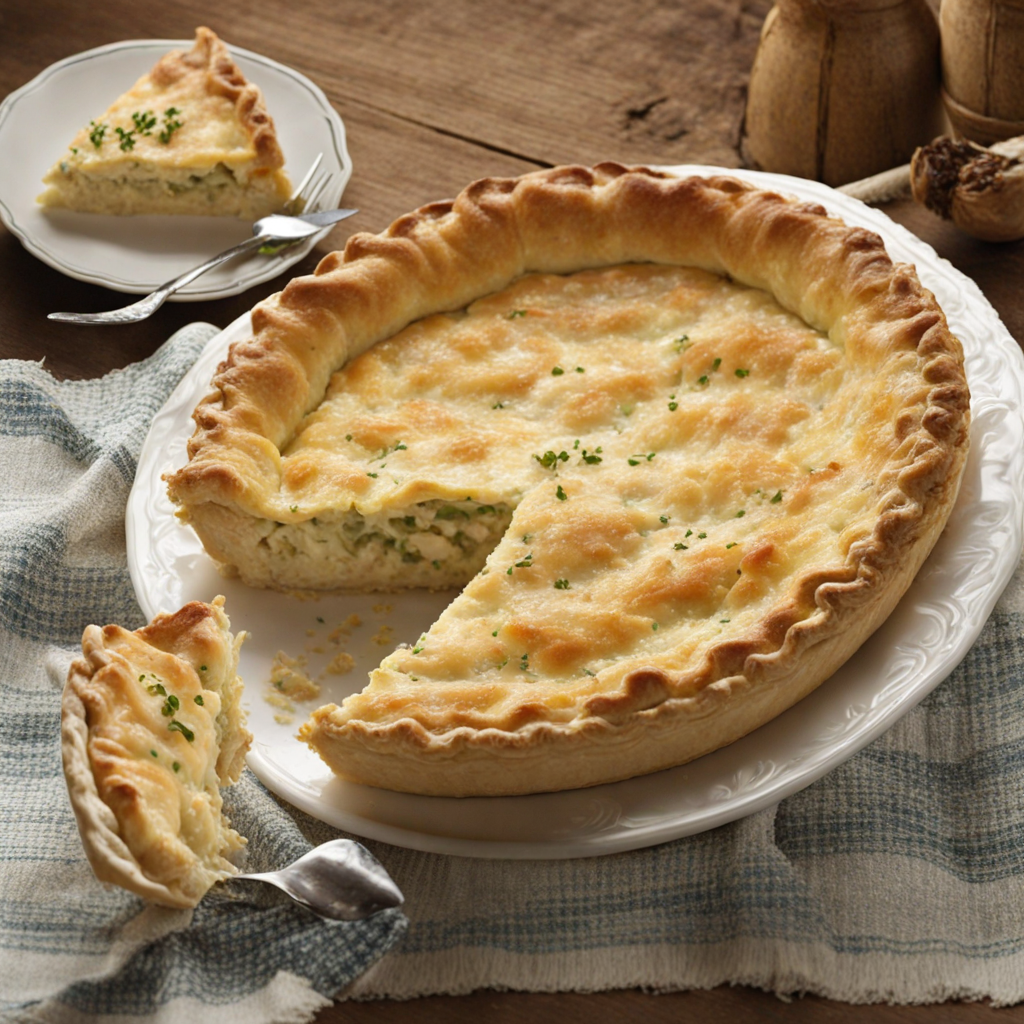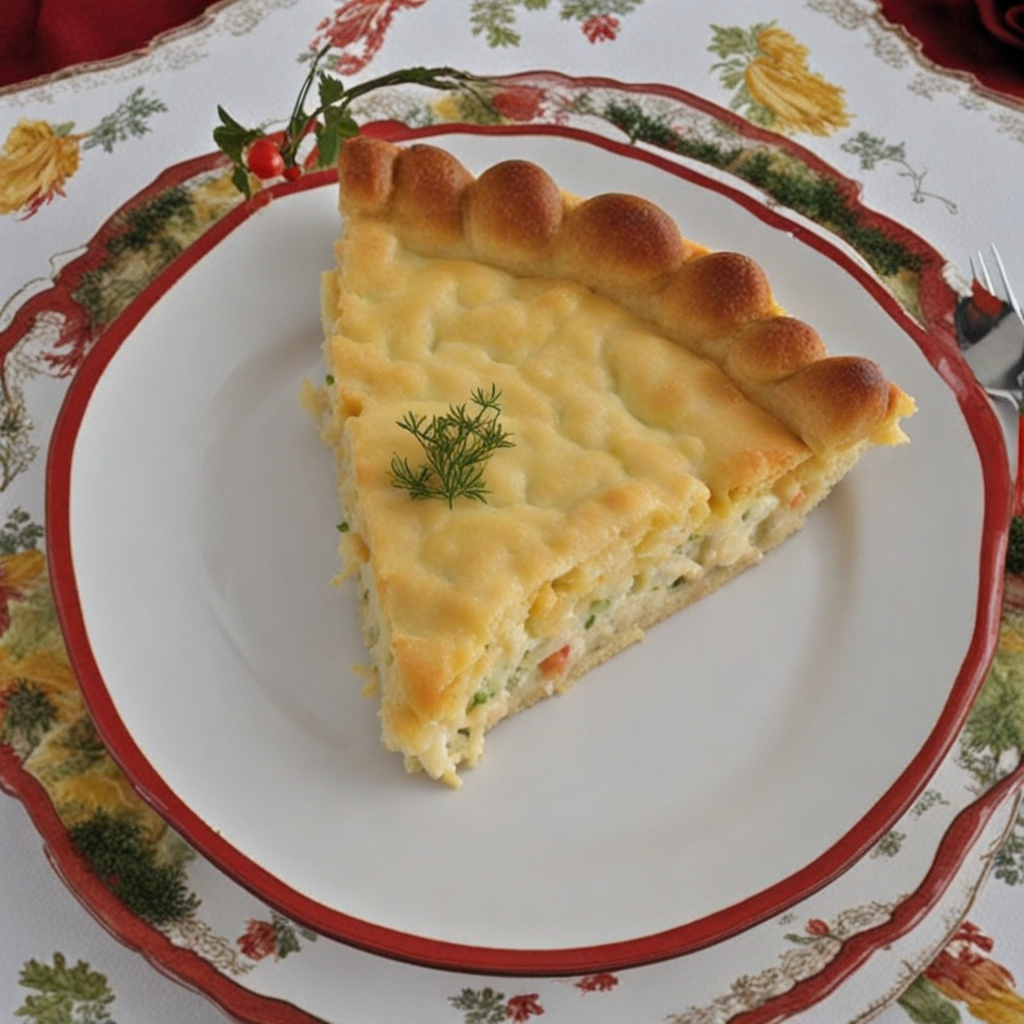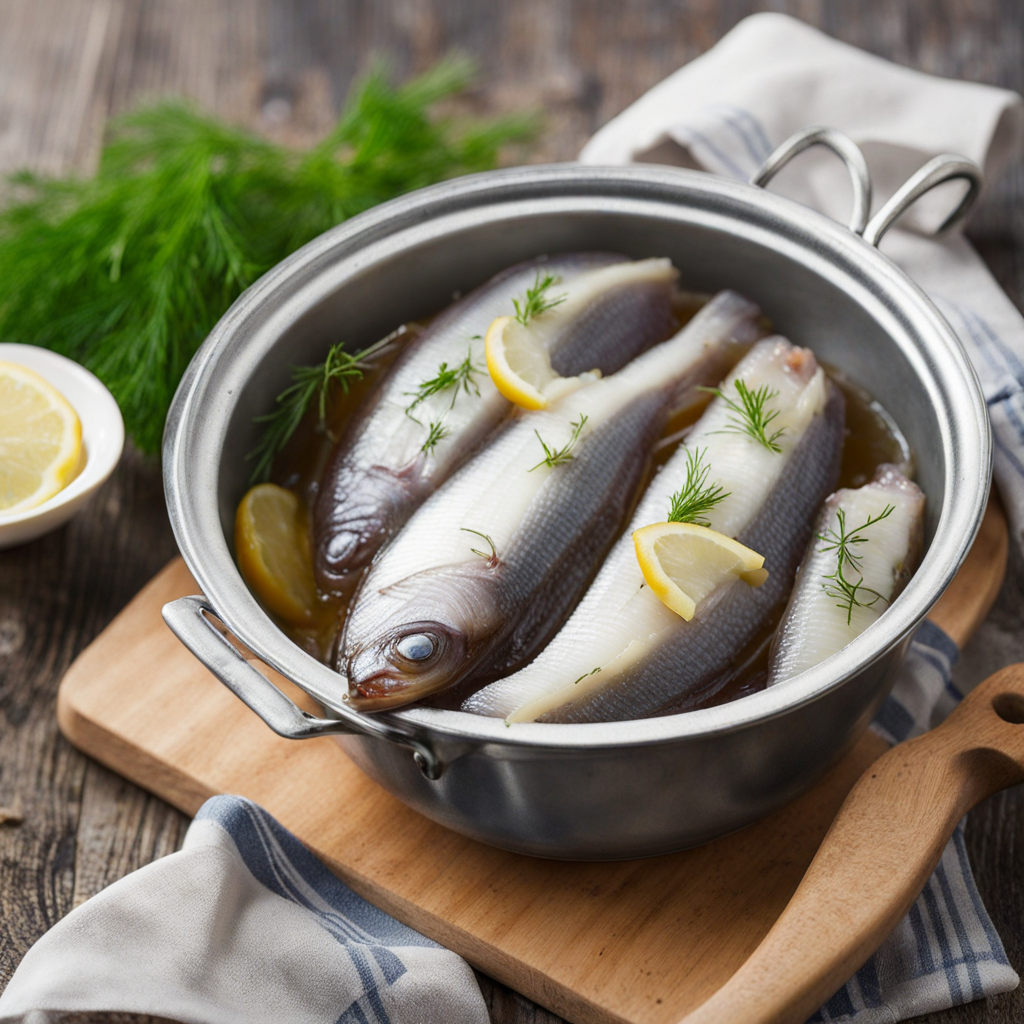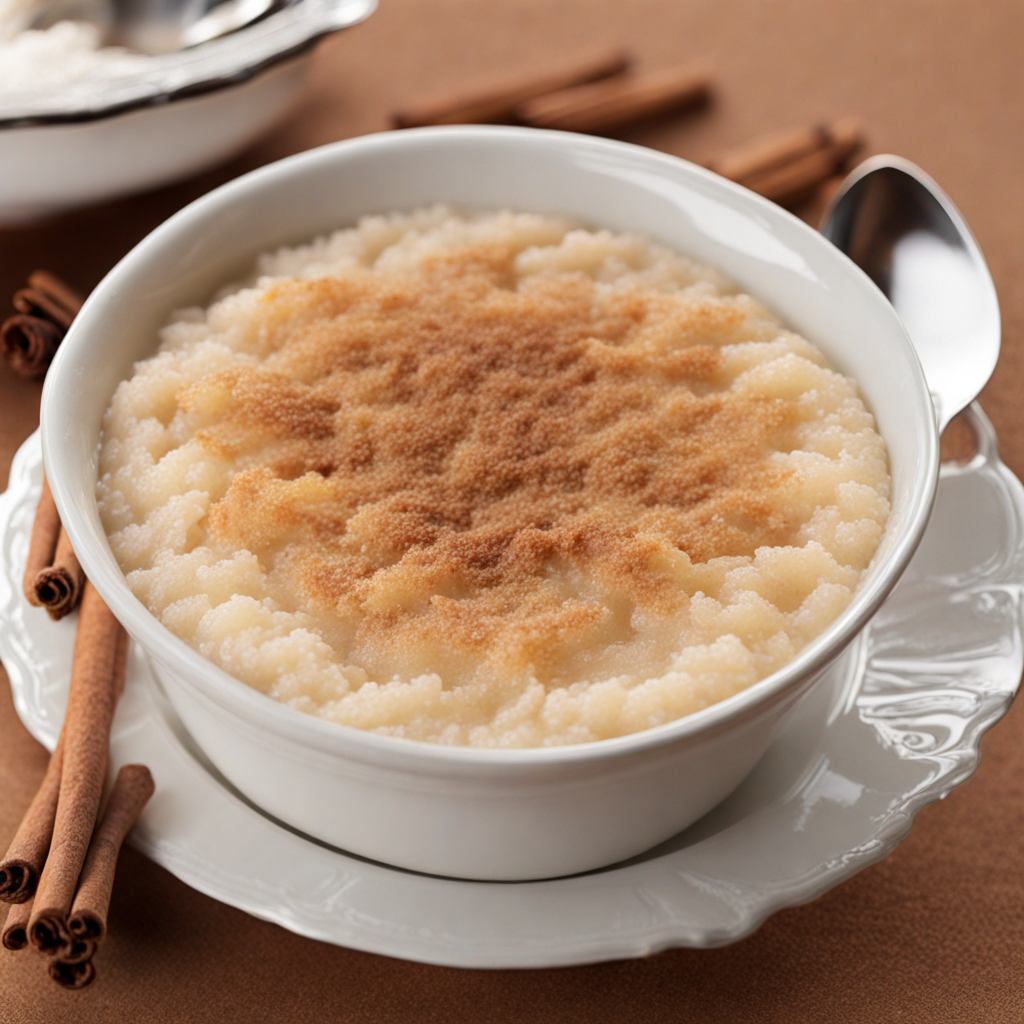Västerbotten Pie
Västerbotten Pie, a beloved dish from Sweden, is a savory pie that showcases the rich flavors of Västerbotten cheese, a sharp and nutty cheese that hails from the northern region of Sweden. The pie is traditionally made with a flaky, buttery crust that cradles a creamy filling, allowing the cheese to take center stage. The combination of the cheese with eggs and cream creates a luscious texture that melts in your mouth, making each bite a delightful experience. Often seasoned with a hint of nutmeg, the pie offers a warm and inviting aroma that fills the kitchen, enticing anyone nearby to indulge in its deliciousness. Typically enjoyed as a part of festive occasions or gatherings, Västerbotten Pie can be served warm or at room temperature, making it a versatile dish suitable for various occasions. It is often accompanied by a fresh salad or pickled vegetables, which provide a refreshing contrast to the rich and cheesy filling. The pie's rustic appearance, with its golden crust and inviting filling, adds to its charm, making it a showstopper on any table. Its unique flavor profile and texture make it a comforting dish that invites sharing and conversation among friends and family. For those looking to explore new culinary horizons, Västerbotten Pie is an exceptional choice. The experience of tasting it is something special, as the flavors meld beautifully, with the sharpness of the cheese balanced by the creaminess of the filling. Each bite reveals the craftsmanship behind this Swedish classic, making it a must-try for food enthusiasts. Whether enjoyed as a snack or a main dish, Västerbotten Pie is a true representation of Swedish cuisine, offering a taste of tradition and comfort that is sure to leave a lasting impression.
How It Became This Dish
Västerbottensostpaj: A Culinary Journey Through Sweden Västerbottensostpaj, or Västerbotten cheese pie, is a traditional Swedish dish that encapsulates the essence of Sweden’s culinary heritage. This savory pie, made primarily with Västerbottensost, a hard cow's milk cheese, represents not just a delectable pastry but also a rich tapestry of history, culture, and regional pride. #### Origins of Västerbottensost The story of Västerbottensost begins in the early 19th century in the Västerbotten region of Sweden, particularly in the small village of Burträsk. The cheese was first crafted in 1872 by a dairy farmer named L. A. E. Hultman, who was said to have been inspired by a traditional cheese-making technique he learned from a visiting cheese-maker from Switzerland. The combination of local milk, a unique bacterial culture, and the harsh, cold climate of Northern Sweden contributed to the development of this distinctive cheese with its rich, nutty flavor and crumbly texture. Västerbottensost quickly gained popularity and was soon recognized as a gourmet cheese, earning accolades for its high quality. By the mid-20th century, it was awarded a protected designation of origin (PDO) status, making it a symbol of Swedish culinary heritage. The cheese is now made in a specific region using traditional methods, ensuring that each wheel reflects the unique characteristics of its environment. #### Cultural Significance of Västerbottensostpaj As Västerbottensost became a staple in Swedish kitchens, it naturally found its way into various traditional dishes, one of the most famous being Västerbottensostpaj. This pie is a savory custard tart that showcases the cheese’s rich flavor, typically combined with eggs, cream, and a buttery crust. The dish is often served at festive occasions, family gatherings, and formal dinners, embodying the spirit of Swedish hospitality. Västerbottensostpaj is often associated with celebrations, particularly during Midsummer, Christmas, and other significant holidays. It is a common feature on smorgasbord (a traditional Swedish buffet), where it stands alongside other beloved dishes like herring, meatballs, and gravlax. The pie serves not just as a satisfying dish but also as a means of bringing people together, fostering a sense of community and shared experience. #### Development Over Time The evolution of Västerbottensostpaj is reflective of broader culinary trends in Sweden. In the early years, the recipe was quite simple, focusing on the cheese and cream, with minimal embellishments. However, as Swedish cuisine began to modernize and incorporate influences from international culinary practices, the pie started to develop variations that included additional ingredients such as herbs, vegetables, and different spices. In the late 20th century, as Sweden experienced a culinary renaissance, chefs began experimenting with Västerbottensostpaj, elevating it from a humble home-cooked dish to a gourmet offering. This period saw an increase in the use of fresh, local produce, and chefs began incorporating seasonal ingredients into the pie, enhancing its flavors and making it more appealing to contemporary tastes. Ingredients such as leeks, spinach, and even smoked salmon became popular additions, reflecting a trend towards innovation while maintaining respect for traditional methods. The rise of the Swedish fika culture—a concept that emphasizes taking a break with coffee and pastries—also contributed to the popularity of Västerbottensostpaj. Cafés and restaurants began serving the pie as a savory alternative to sweet pastries, making it a popular choice for afternoon breaks or light lunches. #### Contemporary Significance Today, Västerbottensostpaj is celebrated as a quintessential Swedish dish, enjoyed both in homes and restaurants. It represents the melding of tradition and modernity, showcasing the adaptability of Swedish cuisine. The dish is often featured in cookbooks and culinary competitions, further solidifying its status as a beloved staple. In recent years, interest in regional and artisanal foods has surged, leading to a renewed appreciation for Västerbottensost and its pie. Artisanal cheese makers in the Västerbotten region have embraced this trend, focusing on sustainable practices while preserving the traditional methods of cheese production. As a result, Västerbottensost has garnered international acclaim, finding its way onto the plates of food enthusiasts around the world. #### A Symbol of Swedish Identity Västerbottensostpaj is more than just a dish; it is a symbol of Swedish identity and pride. The cheese embodies the flavors of its region, and the pie serves as a culinary representation of the local culture. It connects people to their roots, evoking memories of family gatherings, seasonal celebrations, and the beauty of Swedish landscapes. Furthermore, the dish reflects Sweden’s approach to food—grounded in simplicity, quality, and a connection to nature. The emphasis on local ingredients and traditional techniques resonates with a growing movement toward sustainability and ethical eating, making Västerbottensostpaj relevant in today’s culinary landscape. #### Conclusion In conclusion, Västerbottensostpaj is a dish that encapsulates the history, culture, and evolution of Swedish cuisine. Its origins in the Västerbotten region, combined with the rich flavor of Västerbottensost, create a culinary experience that is both comforting and sophisticated. As it continues to evolve and adapt to contemporary tastes, the pie remains a cherished symbol of Swedish heritage, connecting generations through shared meals and celebrations. Whether enjoyed in a cozy home or a bustling café, Västerbottensostpaj invites everyone to partake in a delightful slice of Sweden’s gastronomic history.
You may like
Discover local flavors from Sweden







